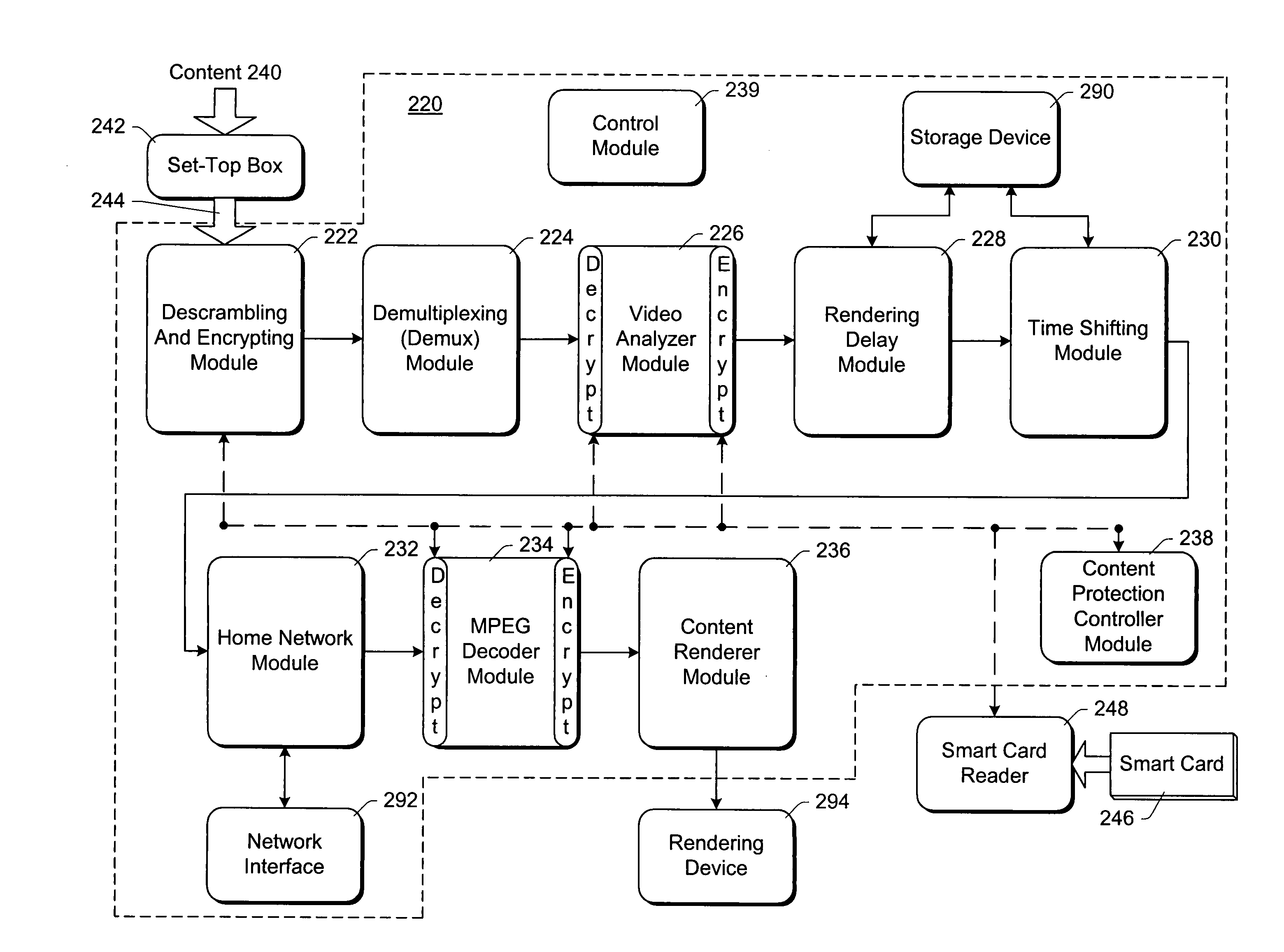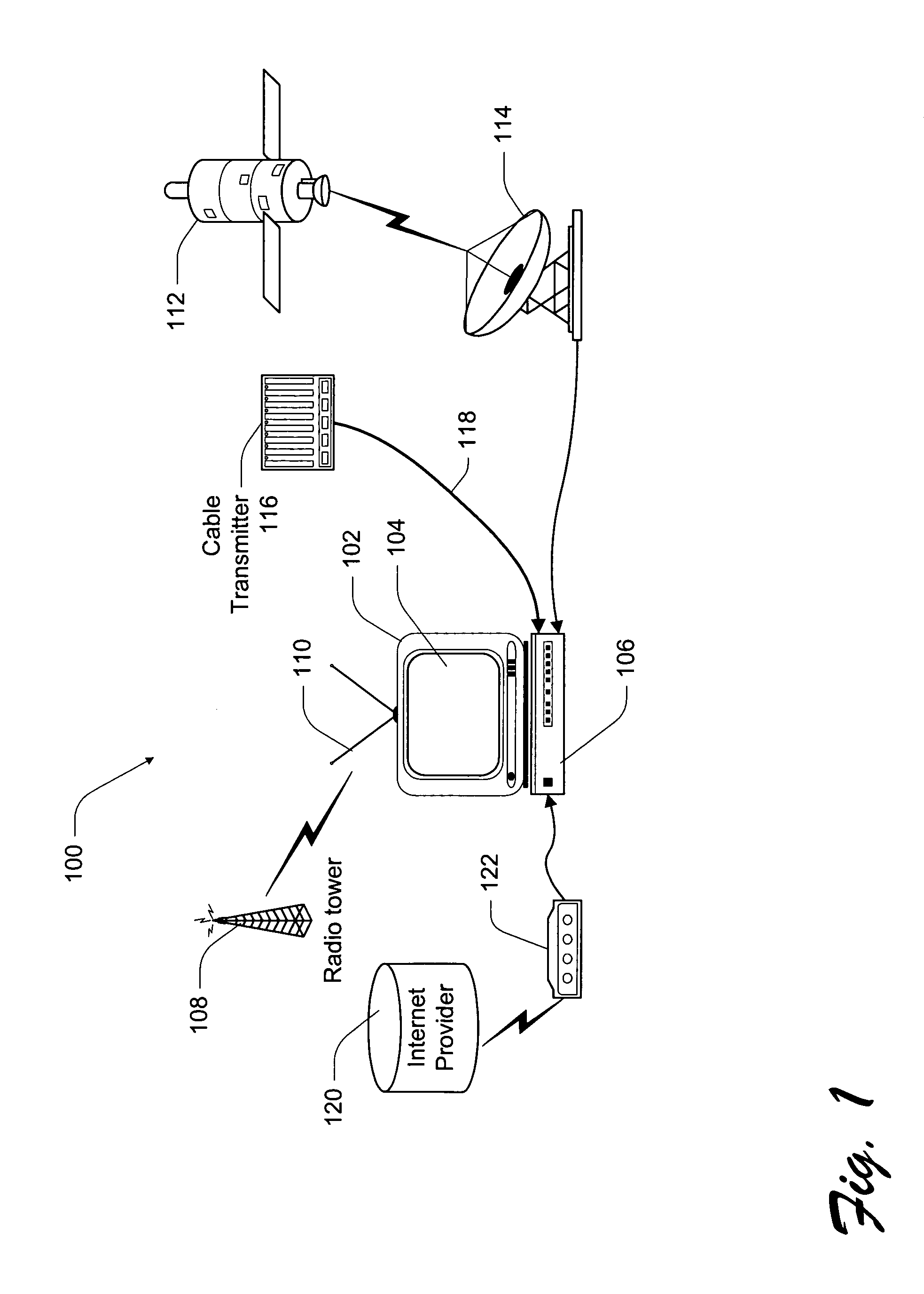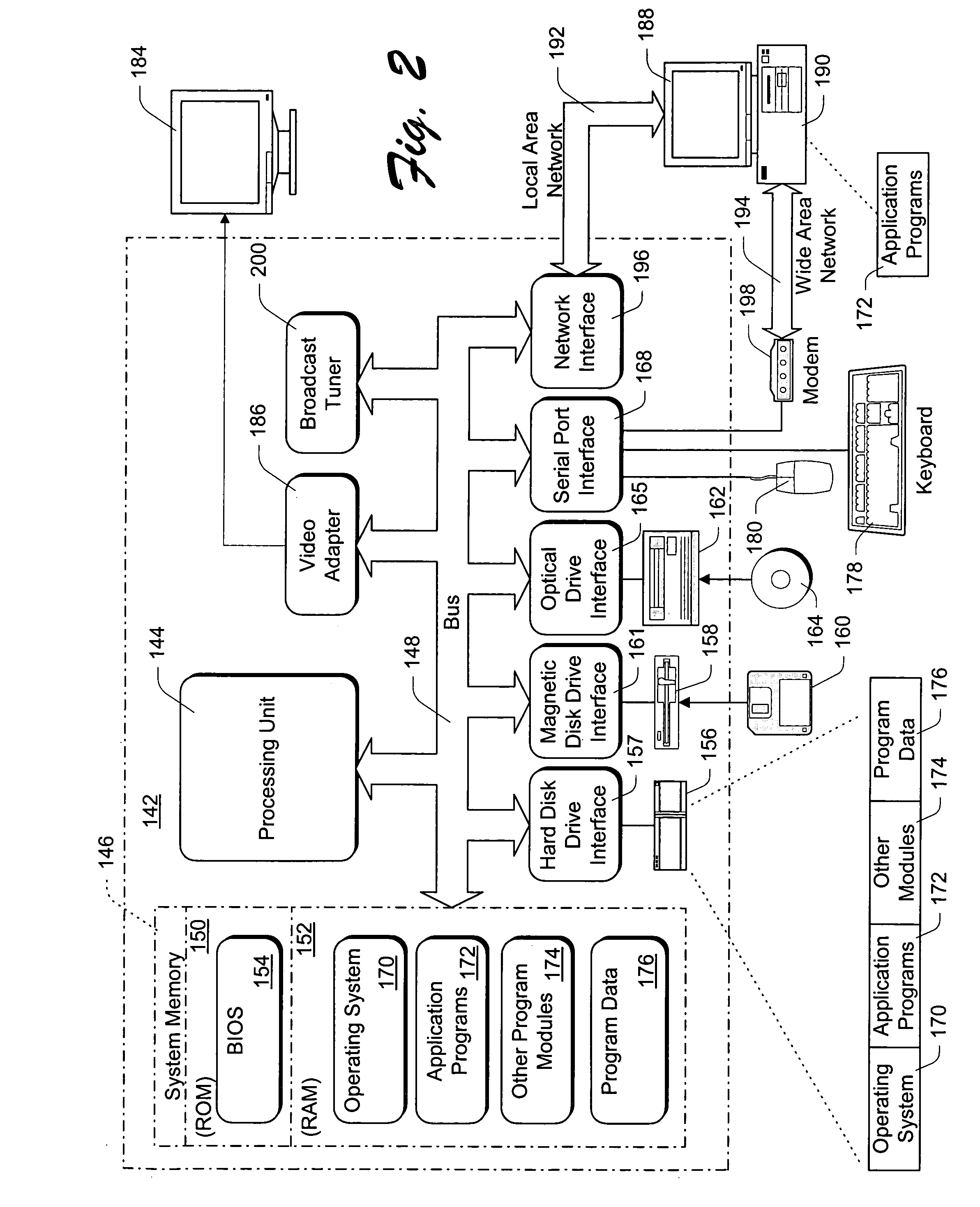Enhancing smart card usage for associating media content with households
a technology for associating media content and smart cards, applied in selective content distribution, television systems, instruments, etc., can solve the problems of parents limiting the ability of their children to render media content, the smart card cannot be used to encrypt and decrypt media content, and the loss of electronic money stored on the card, so as to improve user privacy and facilitate the change of the network boundaries
- Summary
- Abstract
- Description
- Claims
- Application Information
AI Technical Summary
Benefits of technology
Problems solved by technology
Method used
Image
Examples
Embodiment Construction
[0021]In the discussion below, embodiments of the invention will be described in the general context of computer-executable instructions, such as program modules, being executed by one or more conventional personal computers. Generally, program modules include routines, programs, objects, components, data structures, etc. that perform particular tasks or implement particular abstract data types. Moreover, those skilled in the art will appreciate that various embodiments of the invention may be practiced with other computer system configurations, including hand-held devices, gaming consoles, multiprocessor systems, microprocessor-based or programmable consumer electronics, network PCs, minicomputers, mainframe computers, and the like. In a distributed computer environment, program modules may be located in both local and remote memory storage devices.
[0022]Alternatively, embodiments of the invention can be implemented in hardware or a combination of hardware, software, and / or firmwar...
PUM
 Login to View More
Login to View More Abstract
Description
Claims
Application Information
 Login to View More
Login to View More - R&D
- Intellectual Property
- Life Sciences
- Materials
- Tech Scout
- Unparalleled Data Quality
- Higher Quality Content
- 60% Fewer Hallucinations
Browse by: Latest US Patents, China's latest patents, Technical Efficacy Thesaurus, Application Domain, Technology Topic, Popular Technical Reports.
© 2025 PatSnap. All rights reserved.Legal|Privacy policy|Modern Slavery Act Transparency Statement|Sitemap|About US| Contact US: help@patsnap.com



